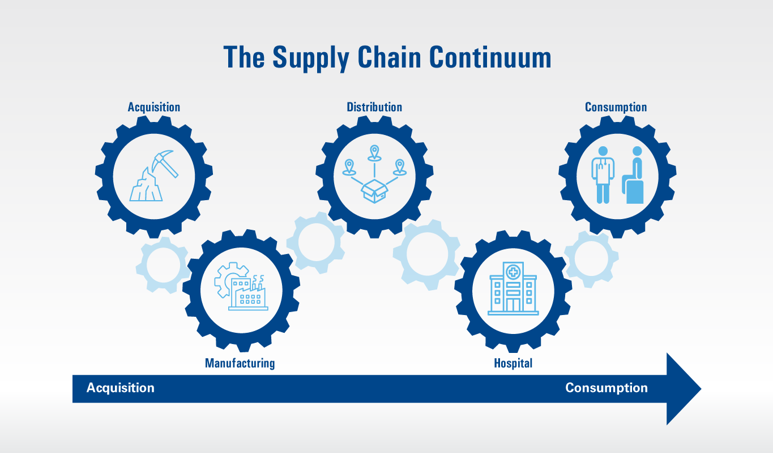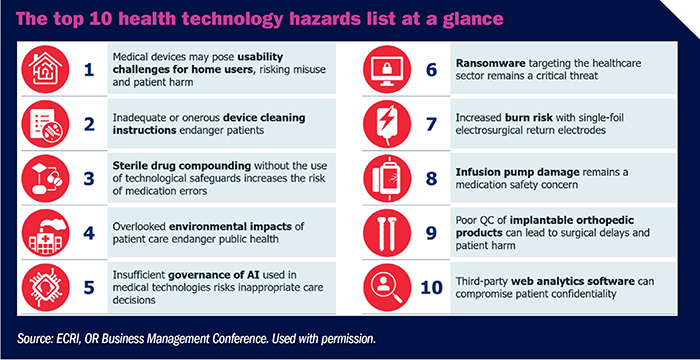Smart segregation, storage reduce biohazardous waste risks

From sharps and blood-soaked surgical instruments to discarded anesthetic agents, biohazardous waste from ORs can threaten human health and the environment. In addition, failure to adhere to regulatory requirements can result in significant fines. However, the volume and diversity of biohazardous waste can create challenges with managing this material. Mitigating…
Hospital’s anesthesia reforms slash carbon footprint, expenses

Editor's Note Universitätsmedizin Berlin reduced anesthesia-related carbon emissions by more than 80% since 2018 by eliminating high-impact anesthetic gases, implementing education initiatives, and revising clinical guidelines, according to a February 27 report in Medical Xpress. The hospital’s efforts targeted desflurane, an anesthetic gas with an extreme climate impact—nearly 8,000 times…
Reprocessed medical devices save hospitals millions, cut emissions

Editor's Note In 2023, hospitals and surgical centers saved more than $465 million and prevented nearly 98 million pounds of greenhouse gas emissions by utilizing reprocessed single-use medical devices, according to a survey by the Association of Medical Device Reprocessors (AMDR). DotMed reported the news October 21. The data indicate…
JAMA video highlights OR sustainability

Editor's Note If global healthcare were a country, it would rank as the fifth-largest emitter of greenhouse gases. So says Dr. Sofya Asfaw, a trauma and critical care surgeon at Cleveland Clinic, in a JAMA Network video on “greening” the OR. Published July 17, the short film features experts like…
Joint Commission International launches healthcare sustainability certification for global organizations

Editor's Note Joint Commission International (JCI) and the International Hospital Federation's Geneva Sustainability Centre (GSC) have introduced a new Healthcare Sustainability Certification (HSC) for healthcare organizations outside the U.S., according to a September 11 report from The Joint Commission. The goal of the new initiative is to address the nearly…
International study highlights OR waste management strategies, barriers

Editor's Note Effective waste segregation and adopting a circular economy approach can significantly reduce environmental impact of incinerating hospital waste incorrectly classified as hazardous, according to a narrative review published August 19 in the Medical Journal of Australia. However, surgeons' concerns about patient safety and insufficient systemic policies can hinder…
Supply chain stress fractures demand rock-solid continuity planning

More than 4 years after personal protective equipment production and inventories crashed amid the global COVID-19 pandemic, the “new normal” in healthcare supply chains seems to be “uncertainty.” Although hospital margins are improving and patient volumes are trending upward, “stress fractures continue to remain in place,” says Michael Schiller, CMRP,…
Carbon-conscious health systems phase out desflurane anesthesia gas to reduce emissions

Editor's Note Citing environmental concerns, multiple health systems have stopped using desflurane anesthesia gas, Becker’s Hospital Review reported on May 7. Citing the Philadelphia Inquirer, the outlet notes that Children's Hospital of Philadelphia and Marlton, N.J.-based Virtua Health are among those that have eliminated the gas so far, with the…
New EPA standards to reduce ethylene oxide emissions

Editor's Note New standards from The Environmental Protection Agency promise to cut nationwide emissions of ethylene oxide—employed to sterilize more than half of US medical devices—by more than 90 percent. According to a March 15 MedPage Today report, the aim is to reduce cancer risk among the 13 to 14…
Unveiling ECRI’s 2024 top 10 health technology hazards list

What is the purpose of the top 10 health technology hazards list, released every year by ECRI? “Our number one goal at ECRI is to reduce preventable harm,” stresses Jason Launders, MSC, former director of operations, device evaluation, at ECRI. “We know that every healthcare provider has a lot they…

 Free Daily News
Free Daily News